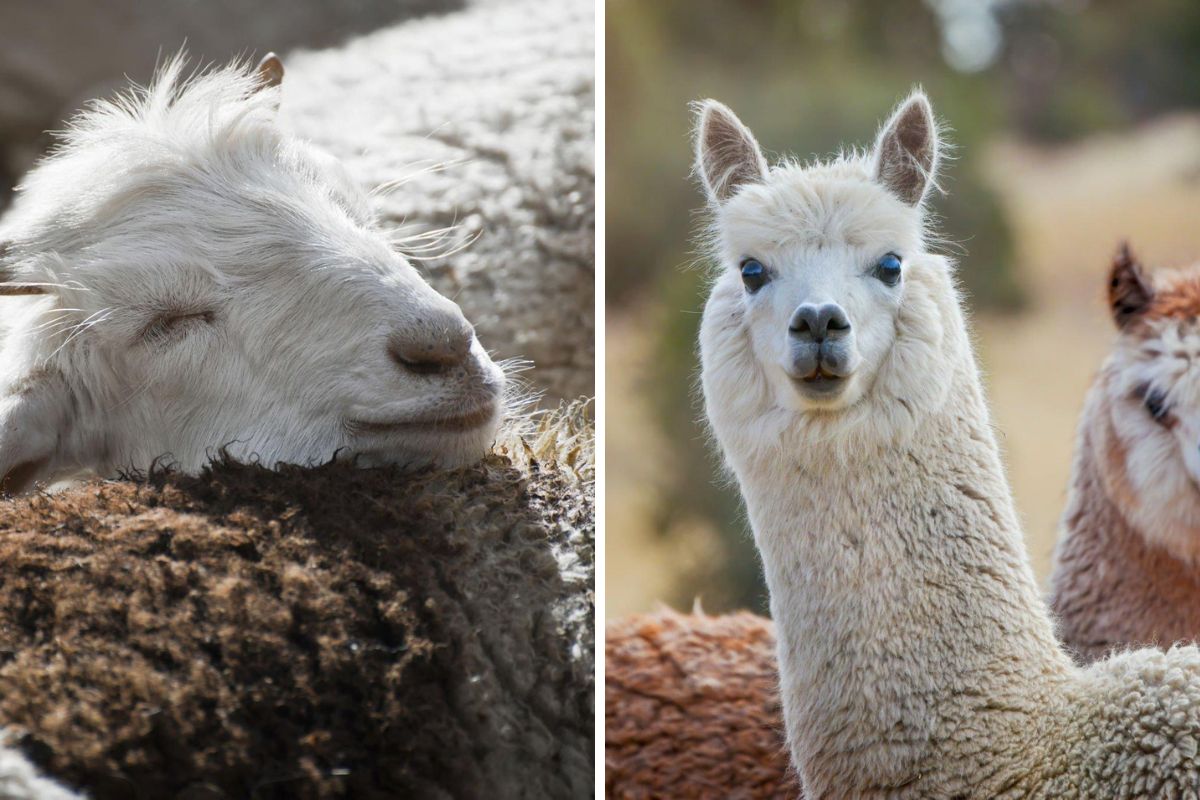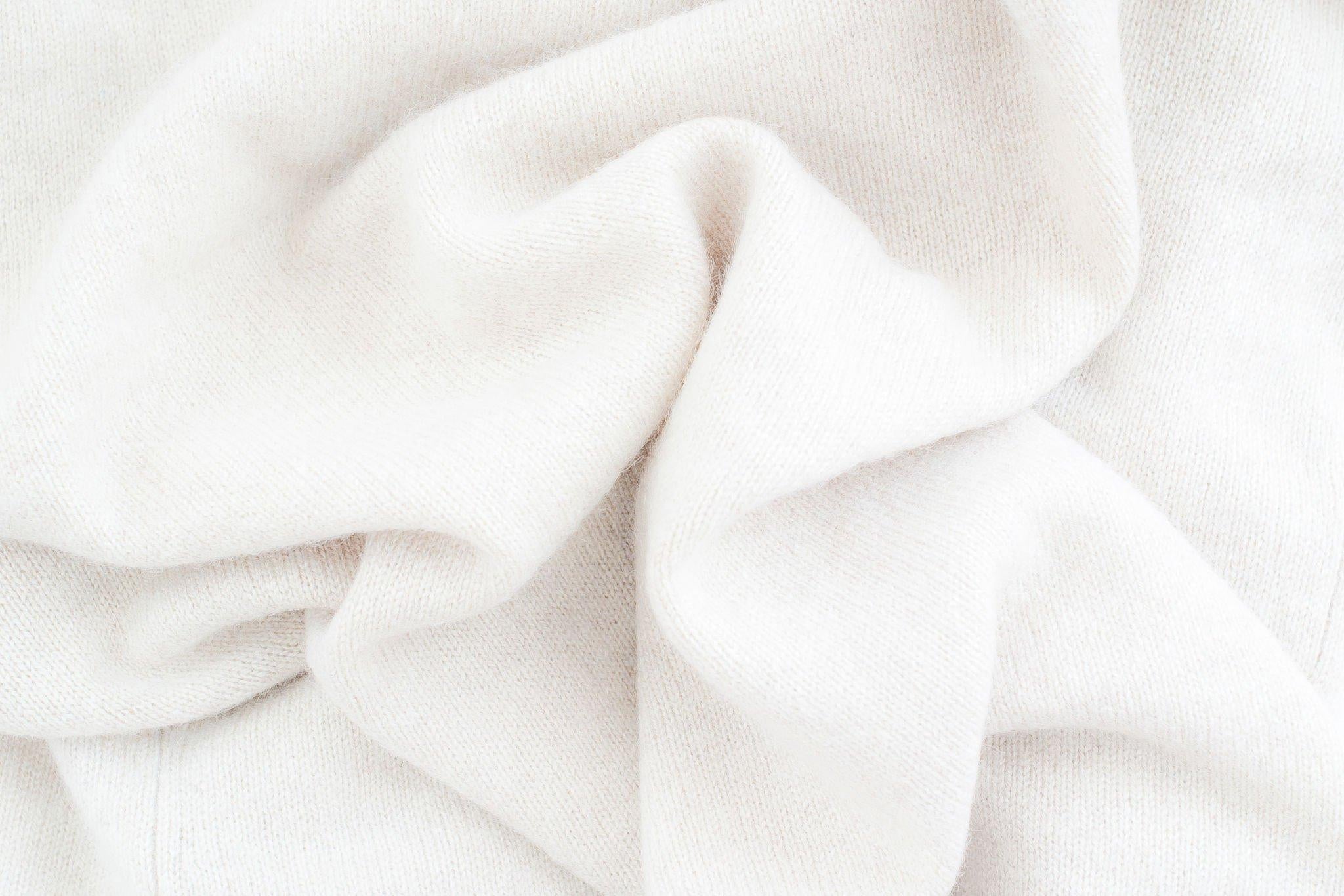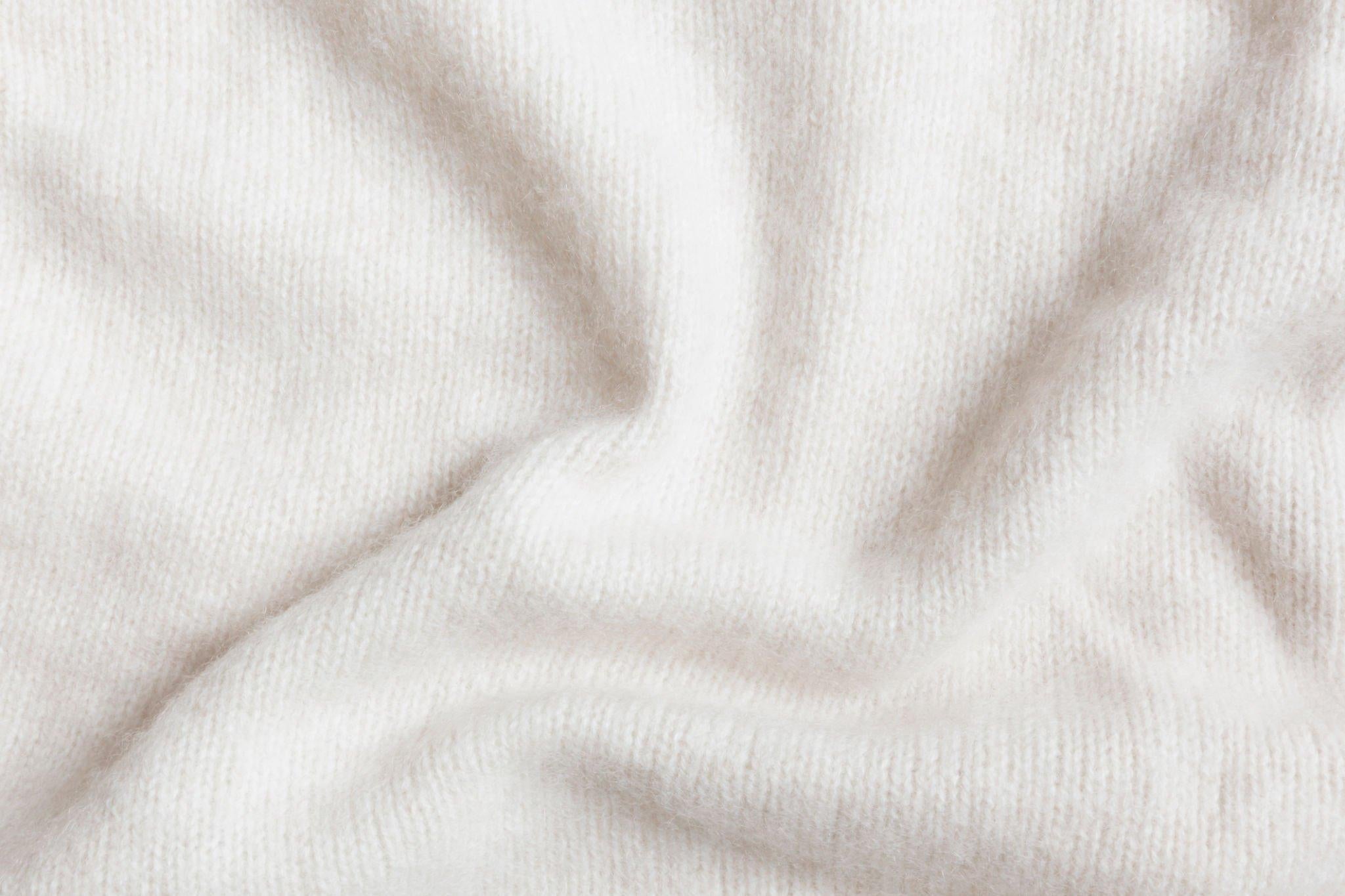When you think of the coziest, most luxurious fabric you can imagine, chances are it's made of cashmere or alpaca, right? At first glance, these two fibers may seem like they're cut from the same cloth - they're warm, strong, and have a luxurious feel.
Cashmere, for years the go-to luxury fiber, is well-known for its durability and super-soft feel. It's the classic choice for everything from high-end sweaters to posh throws. But alpaca wool is also a great option to consider - almost as cozy as cashmere and eco-friendly.
But what sets them apart, and why does it matter to someone just looking for coziest, comfiest winter wear? We're here to answer those questions!
This article unpacks how cashmere and alpaca differ in warmth, softness, durability, cost, and more. We'll also give you reasons as to why cashmere often stands out as the favorite.
What is Cashmere?
Cashmere is a type of wool sourced from the plush undercoat of Hircus goats, also known as "Kashmir" goats. These cashmere goats call the rugged terrains of Nepal, Tibet, Mongolia - as well as parts of India and Afghanistan - their home.
When it comes to making a single piece of cashmere, it's no small feat. It takes the wool from several goats, making this material the epitome of luxury.
Origin of Cashmere
The story of the luxurious fiber known as cashmere begins in the scenic region of Kashmir in northern India. Its popularity can be traced back to royal times when a saint's handcrafted socks found their way into the King of Kashmir's wardrobe.
Today, this fabric remains a highly valued material that originated from the challenging terrains of Central Asia. While China leads in modern cashmere production, traditional methods still flourish in Central Asia.
The drastic temperature shifts in the Kashmir goat's home terrain shape the unique fineness of their coats. These cashmere fibers, much finer than even luxurious Merino wool, are what make cashmere so coveted.
How Is Cashmere Made?
The transformation from raw fiber to luxurious fabric involves several stages. However, the result can vary greatly between mass production and smaller-scale, traditional methods.
For millennia, skilled artisans have employed a hands-on approach: manually shearing, combing, and spinning the hair into yarn. In contrast, industrial production follows the same steps but on a much grander scale.
When spring arrives, it's time for the cashmere goats to shed their winter coats. The goats are shorn using methods that are both safe and humane.
Harvesting happens just once a year, and a grown goat gives about 2.5 pounds of fleece, but only 20% of this is soft cashmere.
After shearing, the soft cashmere is separated from the rougher hair. The best of the cashmere goes into knitted items, the rest into woven goods, and the roughest hair often into rugs.
Once separated, the prepared cashmere fibers enter a spinning machine, transforming them into yarn of varying thicknesses based on the intended final product.
After spinning, the yards will be cleaned again and dyes are added if needed. Local breeders can sell their fleece as is, or they can process it to sell to people who want to spin and knit it themselves.
Finally, the yarn turns into all the cozy cashmere things we love, from cashmere sweaters and scarves to socks and undergarments.
What is Alpaca Wool?
Alpaca wool comes from the natural fibers of alpacas - camelids native to South America. There are two main breeds of alpaca: the Huacaya and Suri, both valued for their unique wool qualities.
Alpaca wool is versatile. It can be thick or thin based on how it's spun, making it perfect for all sorts of garments. It also has a reputation for being softer and more durable than sheep's wool.
Plus, it has a minimal environmental footprint, meaning it's not going anywhere but up in terms of its popularity.
Origin of Alpaca Wool
Indigenous South Americans have raised alpacas for their finer fleeces for centuries. The fleece is so fine that it was dubbed "the fiber of gods" and was often reserved for royalty.
Alpacas in South America's highlands sport naturally thick and fuzzy coats, helping them stay warm in extremely cold temperatures.
While traditionally made in South America, these woolly animals have found their way to different parts of the world, including the USA, Australia, and New Zealand.
Western production of alpaca wool dates back to the 1800s, not long after alpacas made their way to Spain after the conquest of South America.
How is Alpaca Wool Made?
Harvesting alpaca fur isn't much different from sheep shearing. It involves a team: while a couple of people hold the alpaca, another shears off the coat in one go.
Alpacas grow their coat for a year until it reaches the desired length of 5-10 inches (12.7-3.9 cm). But, there's a bit of a debate among local breeders about the perfect time for shearing, as the ideal hair length and timing can differ between Huacaya and Suri alpacas.
Next up is carding, a process much like aligning all the strands in a hairbrush, but for wool. It smooths the fibers, prepping them for spinning.
In regions like Peru, spinning is done traditionally with a tool known as a "pushka," a type of drop spindle. It works a bit like a spinning top, using gravity to twist the alpaca fibers into yarn. There are more modern methods, like the treadle wheel and factory machines, but hand-spinning is the main method in Peru.
This is often why the price of alpaca wool is more expensive when it comes from Peru. Prices also vary based on the breed of the alpaca and the wool's origin, with the highest quality (and cost) coming from Peru's Suri alpacas.
After spinning, the yarn is cleaned. Here's something interesting: unlike sheep's wool, they clean alpaca wool after spinning. The fine under-fleece is then ready to be woven or knitted into the next cozy sweater, blanket, or other luxurious items. As for the thicker outer fleece that comes from older alpacas, that goes to rugs and carpets.
This detailed process, combined with the rarity of alpacas, adds to the premium price of alpaca fur.
The most coveted and expensive is "baby alpaca" wool. While it's not from young alpacas, it is the softest part of the fleece.
Cashmere vs Alpaca Wool Differences
Cashmere and alpaca are both luxurious wools with interesting histories and production processes, but how do they really compare?
Alpaca is known and loved for its warmth, but cashmere comes out on top for its super soft texture. Both are pricey to produce, but cashmere generally costs more, making it a bit more luxurious.
It's tough to say one is outright better than the other, but many lean towards cashmere for its unmatched softness, non-itchy feel, and artisan value.
Warmth
Warmth is one of the first things people consider when deciding between cashmere or alpaca clothing. Both wools have their merits, but they offer warmth in slightly different ways.
Cashmere provides a warmth that wraps around you, thanks to its ultra-fine fibers. Even though it's super lightweight and feels almost like silk, it provides excellent heat retention without the bulk. This is because it's sourced from the protective undercoat of Hircus goats that withstand chilling environments.
On the other hand, alpaca wool is well-known for its superior warmth, due to its unique fiber structure. Alpaca fiber has a hollow core with microscopic air pockets, which create a natural barrier that effectively insulates against the cold.
Softness
When it comes to the softness of wool, the magic is in the microns - the smaller the micron, the softer the feel.
Cashmere's fibers have a circumference of 19 microns, which often feels slightly softer to the touch, lending it that luxurious feel. This is what makes cashmere garments exceptionally gentle against the skin.
To put it into perspective, a typical human hair is about 76 microns in circumference.
Alpaca fibers measure 18-23 microns in thickness. This means that while some alpaca wool might feel a tad less soft than cashmere, they can still be plush to the touch. In fact, the softness can be on par with cashmere, especially when we're talking about baby alpaca wool, known for its extra soft feel.
Durability
Both alpaca and cashmere are durable material options, but one factor to look at is pilling. Those pesky bobbles that appear on your beloved sweater can form when shorter fibers tangle with friction.
Cashmere's susceptibility to pilling is often down to the lengths of its fibers. High-quality cashmere, with fibers longer than 4 cm (roughly 1.6 inches), can resist pilling quite effectively. However, low-quality cashmere, where the fibers are shorter than 4 cm, is more prone to this issue.
So, when shopping for durability, the quality of cashmere wool is crucial to keep in mind.
Pilling isn't a big issue for alpaca wool. Alpaca fibers measure between 8 cm and 12 cm (3.1 and 4.7 inches), making them more durable than low-quality cashmere.
Sustainability
For those into fashion that's kind to the planet, you might want to consider alpaca wool as an alternative to cashmere. Alpaca combines a traditional craft with sustainable methods.
Both alpaca and cashmere have the green thumbs-up in theory - they're natural, long-lasting, and require minimal chemical processing. Plus, they're biodegradable and hypoallergenic, which is great news for sensitive skin and the environment.
However, there is a catch with cashmere: its popularity boom (i.e. the increase in mass production in the cashmere industry) has meant more goats, more herds, and sadly, more strain on precious grasslands.
In contrast, alpacas roam freely in their mountain habitats with sustainable grazing habits. Interestingly, their padded feet also help out with sustainability, as they have a less damaging effect on the environment.
It's important to keep in mind that cashmere and alpaca wool both take a global tour to reach our closets, so there's still a carbon footprint to consider.
But cashmere certainly doesn't have to be unsustainable. It can be done right, respecting both the animals and the land. Several organizations offer certifications that ensure sustainable, ethical cashmere production - it's just about shopping smart and supporting those who do it the right way.
Cost
Cashmere often carries a hefty price tag compared to alpaca, mostly because it's been synonymous with luxury for ages. Alpaca wool is still making a name for itself in the high-end market.
Both cashmere and alpaca wool have products that vary significantly in cost, but much of the price hinges on the quality you're eyeing.
There's a common misconception that alpaca wool would be pricier and more coveted because there are fewer alpacas than Kashmir goats. But, while they are indeed rare, alpacas produce a lot more wool - 5-10 pounds each year versus the 4 ounces from a Kashmir goat.
An alpaca can grow enough wool for four or five sweaters in just a year. This productivity plays a big part in keeping alpaca wool goods more budget-friendly.
For cashmere, you're looking at a range that goes from pricey (a couple hundred dollars) to a real splurge (up to thousands). The quality dictates the cost, and high-quality cashmere wool can set you back a pretty penny.
While alpaca can be slightly more budget-friendly, you can certainly find some alpaca products matching or even surpassing mid-tier cashmere prices.
FAQs
Is alpaca or cashmere wool less itchy?
Cashmere is generally less itchy compared to other types of wool. However, how it feels can depend on the cashmere's quality, how it's made, and how sensitive a wearer's skin is.
Alpaca vs cashmere: which is easier to care for?
Both alpaca and cashmere wool need attention when it comes to care, but cashmere tends to be a bit more delicate. While cashmere can outlive other types of wool, it needs gentle care to do so. Cashmere fibers are more delicate when wet, while alpaca fibers are generally sturdier during cleaning.
Final Thoughts
Alpaca and cashmere wool are the big names in cozy fabrics. They're both soft, and warm, and can make any wearer feel pampered. But if we're picking favorites, cashmere wins.
Cashmere has been the go-to for classy, comfy wool for a long time, and for many, it's still a top pick. You can find cashmere everything, from comfy cashmere sweaters and shawls to fancy cardigans, in all colors you can imagine!
Sure, we may have a soft spot for cashmere, but alpaca is still a wonderful alternative for a quality cozy item at an affordable price.


